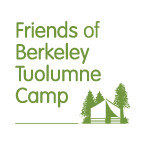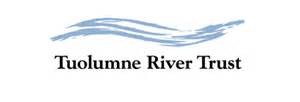The Recap of Camp Tuolumne Night at The Freight!


Hi Campers and Friends… last Monday night we hosted our 3rd annual Camp Update Night at The Freight & Salvage Coffeehouse in Berkeley, and we are so grateful to the Freight for hosting us!
Our efforts, as always, are to continue to bring the Camp Community as much up to date information, involvement and participation as possible.
We were honored to present the latest on The Rim Fire Recovery efforts and the Reforestation Plan, as well as the latest from The Tuolumne River Trust and the City of Berkeley. It was a fun and spirited group that came – almost 150 people – who all brought great Camp Spirit with them and reunited with other campers and staff!
Here’s a summary of what was said for those who missed it:
Friends of Berkeley Tuolumne Camp Executive Director, Scott Gelfand, and President of the Board, Steve Geahry, welcomed the crowd and introduced the US Forest Service officials.

United States Forest Service
Dusty Rhodes – Recreation Specialist Groveland Ranger District
Maria Benech – Reforestation EIS Team Lead – Replanting The Rim Fire Area!
Clare Long – USFS Partnerships and Volunteer Coordinator
Q&A with Scott Tangenberg – Deputy Forest Supervisor
The team opened the presentation with an overview of the 2013 Rim Fire and the hard work that the Stanislaus National Forest (SNF) staff are doing to recover timber, remove fuels, restore trails and recreation access areas, and replant the forest. The heart of the presentation involved the new Draft Environmental Impact Statement (DEIS) that the Forest Service has worked hard to produce and present to the public for comments. Maria gave very detailed and thorough explanations and diagrams of the various replanting schemes, with the emphasis being on creating a forest landscape that is more open, has a greater diversity of trees, and will be more resilient to future fires.
Scott Tangenberg followed with a sobering account of the damage inflicted by this historic drought and the subsequent infestation of bark beetles. With rather shocking images of brown and dying ponderosa pine trees across the Central Sierra Nevada, Scott showed that just as the Stanislaus National Forest is recovering from the massive ecological disaster of the 2013 Rim Fire, it is now under a fresh assault from drought conditions, and bark beetles killing millions of pines.
As pines (particularly the Ponderosas) are stressed and dehydrated due to the last 4 years of severe drought, they have less sap and natural defenses against the beetles. The beetles are able to bore through the bark and eat the living tissue of the trees. The pines’ ability to photosynthesize and and get nutrients down to their root systems; while the roots are unable to get water up to the crowns, and the pines gradually dry up and die. Many areas of the forest are now brown from the dying trees. This is both an ecological disaster, as well as a public safety concern, as falling limbs and trees present a big danger to residents and visitors. The cost of removing the dead trees is massive, and Governor Jerry Brown has declared a State of Emergency, to provide emergency funding to the counties affected.
Dusty gave a more hopeful presentation, outlining the many innovative ways that he and his USFS colleagues are educating and engaging the public in the Rim Fire area. He showed his Rim Fire Audio Tour, and played a stirring clip from one of the audio tour stops: BTC. It was very moving to hear an audio clip from the US Forest Service staff, including Groveland District Ranger, Jim Junette, describe how historic and treasured our camp was. Couple with before + after images of 31585 Hardin Flat Road, there were many teary eyes in the room at that point.
Dusty also showed off a very cool 360 degree virtual video tour of BTC, with images taken from Cabin 44.
Claire then gave an upbeat and funny presentation about the community driven tree planting that is now happening every winter and spring in the Stanislaus National Forest. She showed many fun images of school kids, families, and community volunteers replanting thousands of trees, and she urged the audience to get involved next February, when the narrow window for planting is again open.
For more information about the Rim Fire recovery and reforestation plans, please visit: http://www.fs.usda.gov/detail/stanislaus/home/?cid=stelprdb5442963

The Tuolumne River Trust (TRT), led by Seth Connoly, Restoration and Volunteer Coordinator, and Rebecca Stievater, Grants and Events Manager, gave upbeat presentations about the work that they are doing to fundraise, recruit volunteers, lead tree planting days, and offer an exciting line-up of educational and recreational events for the year.
Seth gave a presentation on the work TRT, with support from several young AmeriCorps volunteers, is doing to coordinate tree planting trips.
Rebecca outlined the many cool events and outings that TRT is offering, which include canoeing trips near La Grange, backpacking trips in Yosemite, concerts at Mountain Sage Nursery in Groveland, film festivals here in the Bay Area, and much more.
For more information about the Tuolumne River Trust, and to get involved in replanting our Stanislaus National Forest, please visit: www.tuolumne.org

The City of Berkeley
Denise Brown, Recreation Services Manager, and our favorite Camp Manager, Craig Veramay, then presented the late updates about the rebuilding efforts at 31585 Hardin Flat Road.
Denise gave an overview of the complex and exhaustive work the City of Berkeley is doing to a) develop the Master Plan for the site, b) secure a new Special Use Permit from the Forest Service, c) recover insurance settlements and FEMA funds, and d) develop preliminary designs for the new site.
Craig gave more detailed slides and descriptions of the many steps in the rebuilding process. His timeline of benchmarks showed the complexity of rebuilding, and the priorities for the City.
Craig gave a tentative projection for the reopening of Camp: summer 2020.
He showed slides of the early camp designs, describing where certain buildings, facilities and trails will be. Most importantly, the D-Hall will remain in place, overlooking the River, while the Rec Hall (called the River Hall) will be closer to where Boys Camp once was. Camp Staff will now be housed on the other side of the road, opposite Sun City. Sun City itself will be allowed to return to a natural state, to protect the Miwok cultural resources there.
Craig closed with a very special presentation of a couple of priceless camp treasures- a photo of the damaged Kitchen Bell, and the recovery of the Activity Bell, which is now safe and sound and rings like it always did!
Our very own Executive Director, Scott Gelfand, then drew the raffle tickets for a free stay at our Labor Day Weekend event in Echo Lake Camp. The winner of the raffle was Matt Fitzgerald – who worked on staff in the 90s!
As usual- we closed arm in arm with our favorite song, “There’s No Place Like Camp Tuolumne” and a short musical video by a camper, Noel Morrison, of camp in 2011.. just so we remember what to look forward to! Awesome job Noel!
Leave a Reply
Want to join the discussion?Feel free to contribute!